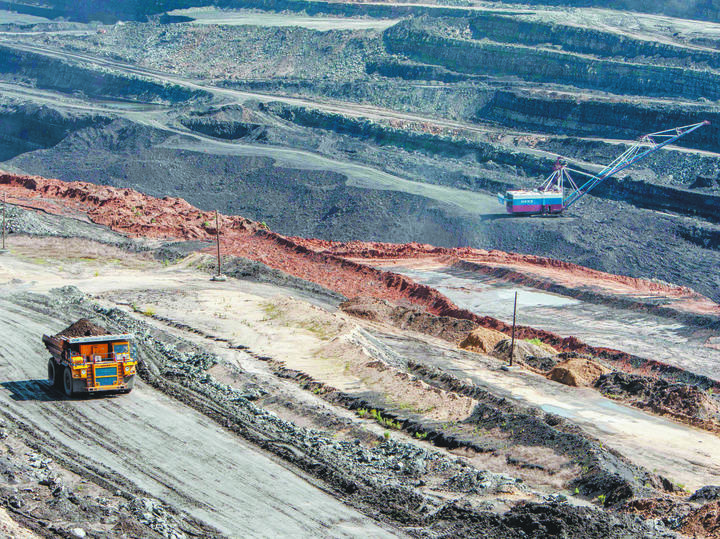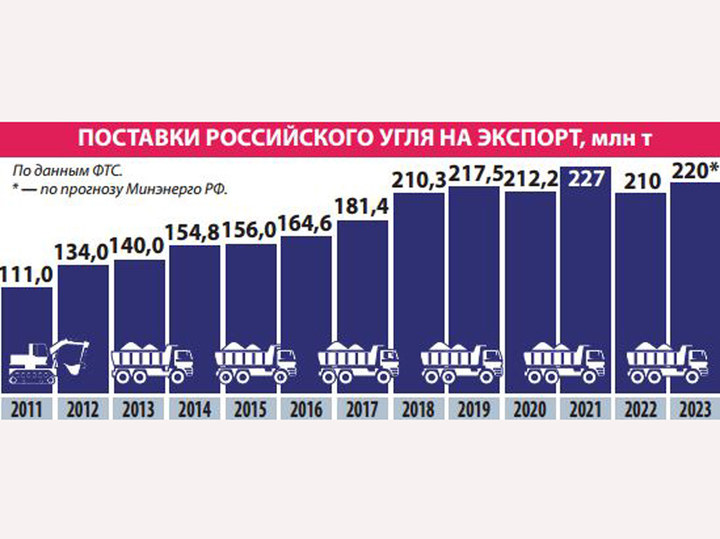Russian coal companies have adapted to Western sanctions
[ad_1]
A year ago, the domestic coal mining industry experienced stress when the European Union completely stopped buying coal from the Russian Federation. Russian exporting companies had to look for new partners and rebuild logistics routes. Significant results have been achieved in a short time. Judge for yourself: last year, India increased imports of Russian coal by 148%, to 16.7 million tons, and China – by 11.2% y/y, to 59.52 million tons.
A number of interesting trends have gained momentum in the coal market this year. Firstly, the eastern direction continues to be the main one for exporters, not only miners, but also metallurgists and oilmen. Thus, competition for the passage of goods along the Trans-Siberian Railway has increased dramatically. In order to unload the railway routes of the Eastern Range of Russian Railways, many companies began to actively develop the Northern Sea Route.
The limited capacity of the Eastern Landfill stimulated the shipment of coal through the ports of the northwest and south. It is through these directions, for example, that the growing export of coal to India and Turkey goes. In this regard, the commissioning of a new large coal terminal in the port of Taman turned out to be very timely.
Secondly, the Government of the Russian Federation gave the coal companies timely support. Recall that until July 1, coal exporters from Kuzbass, Buryatia, Khakassia, Tuva and Yakutia had priority in determining the order of transportation of railway cargo at the Eastern range. Now they have returned quotas for export to the east.

The most important for the “health” of the industry were not only government decisions, but also initiatives that the authorities eventually abandoned, said Alexei Kalachev, an analyst at FG Finam: “In the context of a budget deficit and the search for sources of replenishment, the government still did not increase the MET rates for coal, did not include coal miners in the list of windfall tax payers, did not reduce investments in the expansion of transport infrastructure.
Thirdly, since the beginning of this year, world prices for thermal coal have dropped significantly. According to Nariman Taiketaev, director of the corporate ratings group of the NKR agency, the main price benchmark for coal in the Asian market (Newcastle FOB, 6000 kcal / kg) has fallen from about $400 per ton in early January to $130 / ton. by the end of June. On the European market, prices fell from $170/tonne to $120/tonne. (benchmark ARA CIF). Export prices for Russian coal also decreased following world prices: from $90–160/t to $70–100/t on an FOB basis (depending on the port of shipment). For comparison, Australian coking coal prices fell from $310/t to $230/t in the first half of this year.
This, of course, is below the peak values, but still above the average prices in the pre-crisis years. Thus, current prices generally supported the profitability of coal exports, taking into account a possible discount. Taking into account the cost of production and the cost of transportation by rail and transshipment in seaports, according to Kalachev, coal exports should remain profitable at prices above $100 per ton, and taking into account the devaluation of the ruble, already from $80 per ton. “The devaluation of the ruble by 30% had a positive impact on the revenues and profits of coal exporters,” Nariman Taiketaev emphasized.
An interesting fact: despite the declining world prices, our miners have increased both production and exports. “Russian companies are in no hurry to reduce production, counting on a price reversal upwards this fall,” explained Igor Galaktionov, an expert at BCS Mir Investments.
Most likely, all of the above factors allowed Deputy Minister of Energy of the Russian Federation Sergey Mochalnikov to declare that the Ministry of Energy expects to maintain coal production and export indicators at the level of last year in 2023: production is above 440 million tons, exports are above 220 million tons. According to the data for the first half of the year, the task is quite feasible.
The wave of optimism is gaining strength in foreign markets as well. According to Igor Galaktionov, in the first half of the year, global coal consumption grew by 1.5% to 4.7 billion tons due to the growth in electricity production (+1%) and industrial use of coal (+2%). Coal prices have stabilized to 2021 levels. “Energy coal is again cheaper than coking coal, and imports are finally becoming profitable again. Global coal purchases this year should break the 2019 record of 1.3 billion tons,” said Vladimir Chernov, analyst at Freedom Finance Global.
Favorable price environment allows coal companies to increase production of coking grades. In the near future, the opportunities for exporters in the Far East will expand: the new seaport of Sukhodol and the coal terminal in the port of Elga will soon start operating.

According to the forecast of the consulting agency Yakov & Partners (formerly McKinsey in Russia), the global demand for thermal coal in the world will grow until 2030 and will reach 7.01 billion tons per year. Determining for the dynamics of world demand for energy coal, according to analysts, will be its consumption in China. Recall that Beijing has confirmed plans to build new coal-fired thermal power plants with a total capacity of 165 GW. Global consumption of coking (metallurgical) coal will grow throughout the period due to strong growth in demand in India and other developing countries in Asia. By 2050, it will reach 1.1 billion tons (+18% by 2021) in the baseline scenario. The total demand for coal (energy and coking) will increase by 3% compared to 2021, to 7.9 billion tons.
According to Nariman Taiketaev, in the near future the main consumers of coal in the world will remain China and India, which together form more than 70% of world demand. According to him, large coal companies with their own fleet of railway cars for transporting coal and port facilities for its storage and transshipment will have strong positions in the market.
According to Vladimir Chernov, African countries can also become new sales markets (except for India and China). At the recent Russia-Africa summit held in St. Petersburg, special attention was paid to the Russian coal market. “Representatives of Morocco, for example, proposed to create a coal hub,” the analyst said.
Other growing economies in Southeast Asia remain promising, including Sri Lanka, Thailand, Malaysia and Vietnam, where Russian coal can successfully compete with both more expensive Australian and less caloric Indonesian coal, Kalachev added. According to him, Turkey is increasing the import of Russian coal, and, perhaps, not only for itself, but also for supplies to third countries.
So domestic miners will have enough work for a long time to come.
[ad_2]
Source link






